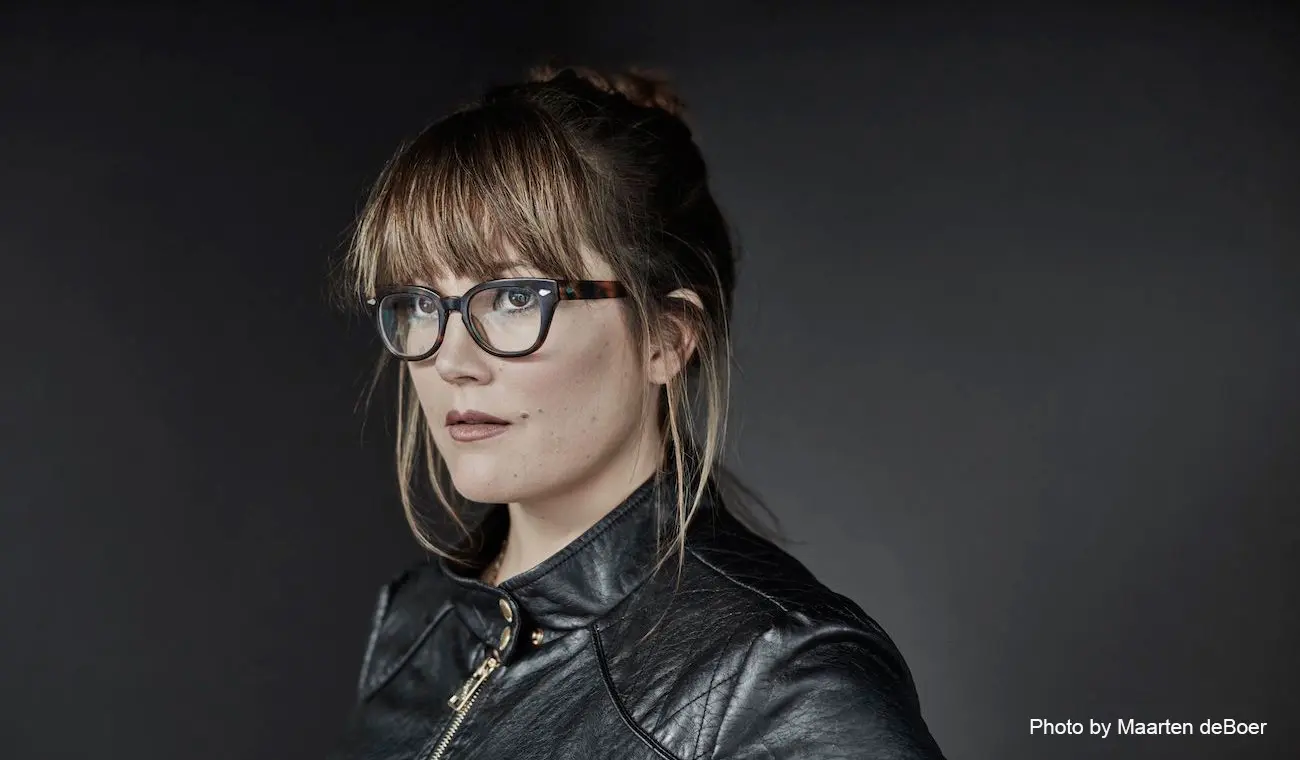
Pro tips on creative collaboration from Cindy Wilson of The B-52s
Published on June 26, 2017
Few bands embody the spirit of new wave music like The B-52s. Long before “Love Shack” made them mainstream pop stars, the group had already become iconic innovators with weird, wonderful classics like “Rock Lobster” and “Private Idaho.”
Last year, founding member Cindy Wilson released her first solo records, which are remarkable not only for their lush dreampop arrangements, but also for the new vocal style they showcase.
We had a chance to chat with Cindy and her new bandmates about how they co-created their new sound, and how her collaborative process has evolved since her early days in The B-52s.
You’re touring in celebration of the 40th anniversary of The B-52s at almost the same time that you’re releasing your new solo album. As you sing early songs alongside your newer songs, what strikes you most about the way your musical style has evolved over the years?
CINDY: It’s interesting. The B-52s as a whole, we’ve been together for 40 years! Can you believe it? (laughs) And we have gotten to be very playful. We had great people, very original people, very original singers. We didn’t mind experimenting in every way possible. If you go back and listen to all the records, you can see how many variations there are. That was really wonderful to be able to do that. With the new stuff, I’m just continuing the searching and being creative and doing new things, too. So they’re kind of the same.
How do The B-52s co-create songs?
CINDY: With The B-52s, it's a very slow process… The way we’d work was just jamming all of the time, then sifting through the stuff… It would be Ricky and Keith bringing music, and then Kate, Fred, and I jamming. And it would usually go that Kate and I would come up the harmonies and lyrics and lines in the songs, the vocal melodies… And Fred too, he had a lot of ideas for vocal melodies. But you have to go comb through all that, you know. It’s amazing how much we threw away. That would be fun to make into another song or something.
How does that compare with your new band’s approach? How does the process begin?
CINDY: It’s all different.
SUNY LYONS: Sometimes there were some songs that began as like stream-of-consciousness experiments. There was one where you guys both did like stream-of-consciousness vocals each in a booth for like 30 minutes or something and that eventually turned into a song.
CINDY: And he had to go through all of that material. (Laughs)
SUNY: Yeah, I was engineering.
RYAN: We would do these, essentially, improvisational vocal sessions where we would just get in the booth together for an hour and just make up melodies, make up lyrics, and then take the best elements from that later and sort of see what worked or what stuck out as being sticky or catchy.
CINDY: And what would work together, you know.
RYAN: A few of the songs that I brought to the table were using some little apps on the phone, just to create some melodies, just to generate some little ideas. It was kind of amazing 'cause those little seeds sprouted into these, you know, fully structured songs just from like a little glitchy melody on the phone. So that was pretty cool.
CINDY: The B-52s have always been experimental, too. So it’s a lot like that.
So sometimes you use technology as a starting point? Have you done any collaborating where you weren’t in the same room at the same time?
RYAN: Yeah, I think a few of the tracks had started with creating beat or a stem on my phone, and then actually sharing a Dropbox folder with Suny. Suny has played the role as engineer and producer of the record. So I would definitely generate an idea at home and then we’d share files that way and get things going.
SUNY: In fact, I think “Frenzy” off the new EP is a good example of that. It started off as bits of an idea on your phone, and then became something more realized in the studio. Then I experimented with a bunch of vocal ideas for Cindy. And then she came in and actually did some vocals. There was a lot of back and forth and sharing before that was realized.
Grow bigger, brighter ideas with Dropbox Paper. Find out how
How do you work together in live performances? Is it a similar style?
CINDY: It’s like an art project. It feels very theatrical to me. We followed a form where it begins and never ends. It just flows like a river. We kind of wanted to do an album that never really stopped, that kind of had that form. So then we took a cue from what the music was doing,
RYAN: I think there’s a cerebral element to the music as well. For the live show, we wanted that to come across in a way that would sort of carry you along, almost like putting you in a trance. SUNY: We sort of treat it a little more like an art installation than a rock show. But it could be both.
A lot of your songs with The B-52s are so joyful and playful—they really showcase how powerful your voice is. On new songs like “Corporeal” and “Twice Shy,” there’s a dreamy, atmospheric vibe. What motivated you to explore the new sounds in your solo work?
CINDY: We just went into studio just for fun to see if we could work together. It was just completely for experimentation. We had no plans to put anything out. We just wanted to see what we could do. It’s just like taking an acting class. You use certain ways of expressing yourself to convey certain emotions. I learned that I didn’t have to yell all the time. That’s good for certain emotions, but for some emotions, you need to go a little softer and have a lighter touch, and that conveys a lot more than just yelling, you know?
So I’ve been learning. It’s like I’ve been going to music school, doing this record. I’m learning a lot of things about how to use my voice. Honestly, when I play with The B-52s, we’re kind of playing the same music, which is fun and I always approach the song like it’s the first time I sang it… But it’s nice to be able to investigate more of my voice, because I do have a lot of range. And working with these really terrific people. They’re first rate. I’m really, really lucky to have found them. And we all work well together, so it’s been great.
Can you talk about the importance of risk taking in your creative process?
CINDY: Don’t play it safe, you know. It’s so easy to fall into a routine. There’s games you can play, too, like Eno came up with something. Do you remember that game?
RYAN: Oblique Strategies.
CINDY: I mean stuff that would just get you out of your head. You know, wear a kooky thing on your head, wear wigs, or whatever.
What makes or breaks collaboration?
CINDY: It just it can't be all about you. You need to stand back and embrace the process you know, and enjoy what other people are teaching you… and just have fun with it.
RYAN: Yeah, I would add to that maybe just recognizing what’s best for the song. It’s something kind of outside of yourself. And that involves kind of checking yourself at the door and doing what’s best for the creative process.
You’ve mentioned in other interviews that making music helps you cope with stress and get through hard times. What is it about the creative process that you find healing?
CINDY: I don’t know. It’s just like a weight off your body. You come in with life’s hardships and sadness. Then you start working with people and it’s a creative thing… it’s kind of invisible magic. It’s really trippy, you know? But all of a sudden, the sadness is lifted. It’s just amazing how being creative and making music can help when you’re down.
In fact, that was what happened with Cosmic Thing. We lost Ricky, you know? And it took even a couple of years after Ricky’s death (before) we all went back into the studio to kind of kick things around and see how we felt about it. It was such a healing thing for us to get together. It felt like Ricky was in there with us. It turned out to be an amazing album… We did not have a clue that it was going to be a popular record. In fact, we wrote the record for us. It was very nostalgic for us. It was looking back at the good times. So, it’s really interesting how it came off.
To learn more about Cindy and her new album, Change, go to cindywilsonb52s.com. To find out how Dropbox can help you collaborate on your next creative project, check out Dropbox Paper.





